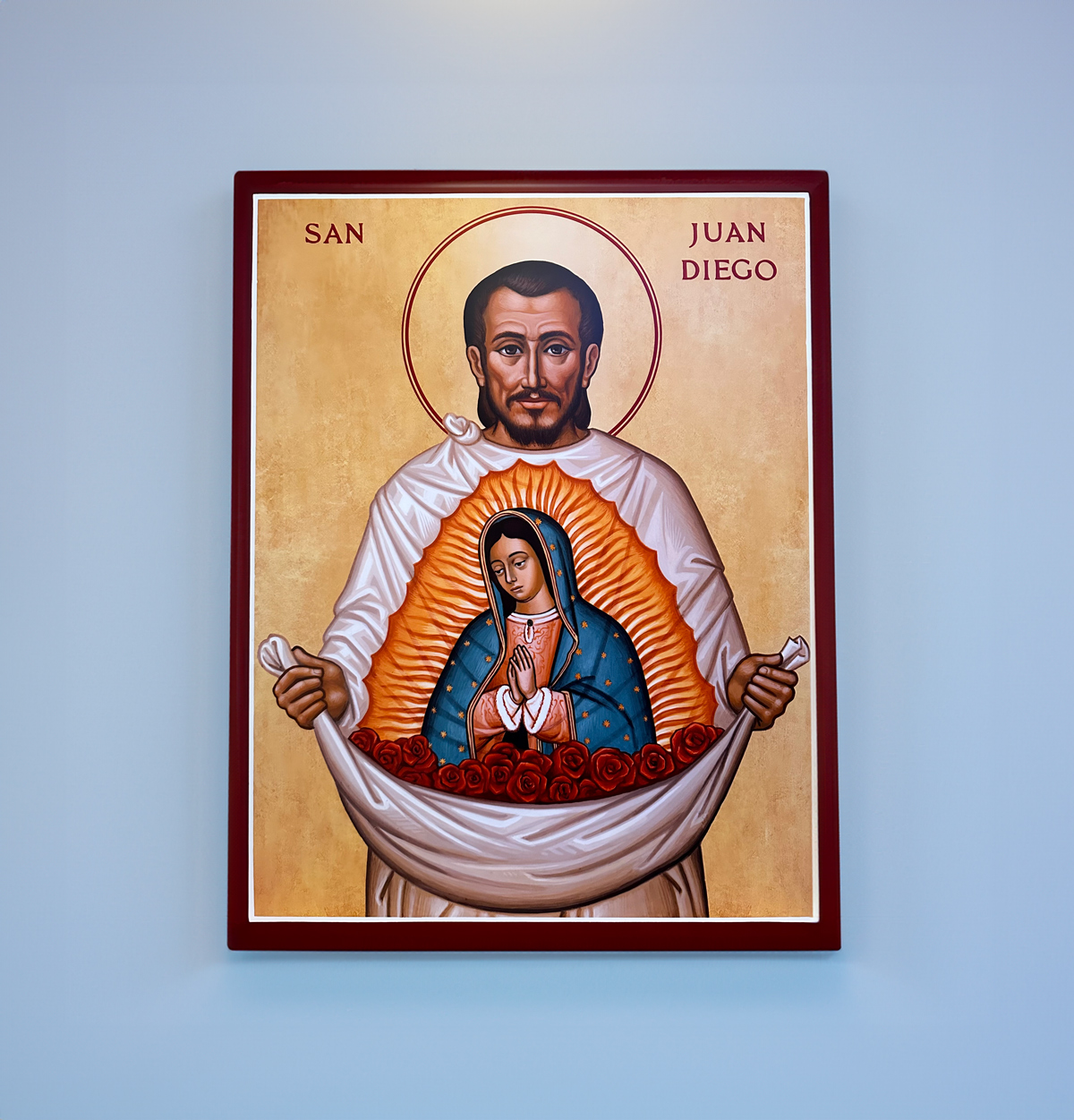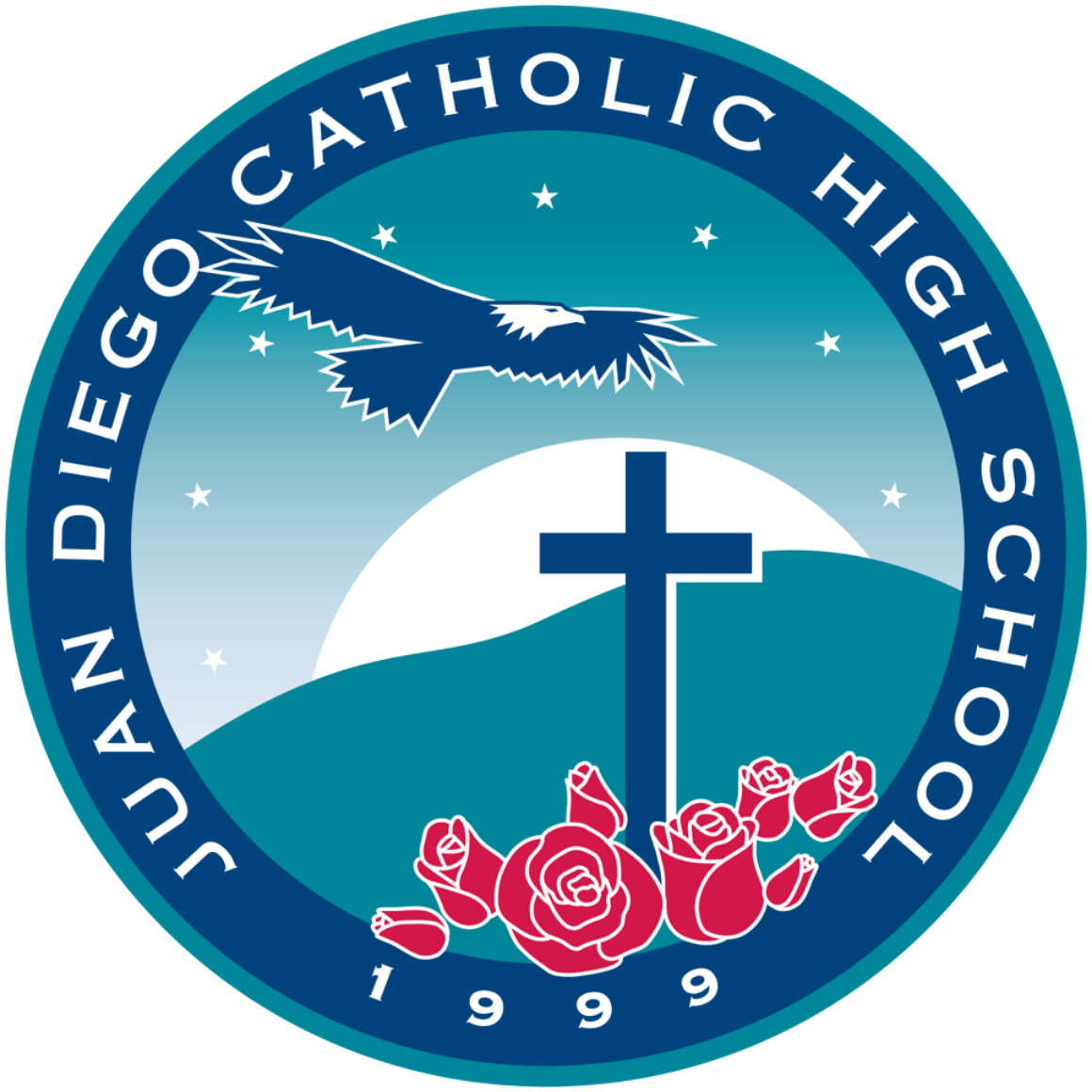We apologise but there was a problem sending your message. Please contact customer support at [email protected]
Extremely devout, Juan Diego used to walk several miles over Tepeyac Hill each morning on his way to Mass. It was during one of these walks on December 9th, 1531, that the Blessed Mother first appeared to him as an indigenous Mexican woman encircled in heavenly light. Speaking his native tongue, Our Lady of Guadalupe asked Juan Diego to tell the bishop to build a shrine there in her name, where she would pour out her grace upon all those who invoked her.
- Juan Diego did as he was instructed, but the bishop, Juan de Zumárraga, though kind, did not believe him and told him to return some other time so he would have more time to hear his account. Disappointed, Juan Diego returned to Our Lady and asked that she might find another person of greater importance to whom the bishop might listen and trust. Our Lady implored him to try again and, being a man of great courage and faith, he assured her that he would the following day.
- After attending Mass the next morning, Juan Diego again went to the bishop who refused to see him for some time, and ultimately sent him away, demanding a sign that what he said was true. Juan Diego left once more, not knowing that the bishop had had him followed and returned along the road to where the Virgin waited for him. Those who followed lost him where the road met a ravine, just before the bridge of Tepeyac. Frustrated, the men went back to the bishop, claiming Juan Diego was deceiving them and that he should be punished for lying if he returned. Juan Diego told Our Lady that the bishop requested proof and she advised him to return the following day for the sign.
- But the next day, Juan Diego did not go to the meeting place. Having learned the night before that his uncle was gravely ill and would soon die, he promised to fetch a priest to hear his uncle’s confession and administer last rites. Juan Diego left at daybreak on December 12th and took a different, indirect path around the hill to avoid an encounter with Our Lady, who would surely delay his journey to the priest. But as he came around the hill he saw her descend toward him anyway. When she asked Juan Diego what was the matter, he told her of his uncle’s health. The Holy Virgin responded:
Listen and understand well, my son, smallest of all, that you have no cause to be frightened and worried, let your heart be troubled no longer, have no fear of that sickness, nor of any other sickness or sorrow. Is this not your mother here next to you? Am I not your health? Are you not safe here within my loving bosom? What else hast thou need of?

- She went on to tell him that his uncle would not die (and later Juan Diego would learn that he had already been restored to health) and feeling relieved, he asked her to send him on his way to the bishop with the sign. Our Lady instructed him to climb the hill at Tepeyac and gather the roses blooming there.
- Though it was winter, Juan Diego did as he was told and found numerous Castilian roses in full bloom. He gathered the flowers and brought them before the Blessed Mother who arranged them in his mantle and instructed him not to open his cloak before presenting them to the bishop as a sign, and repeating the request that a temple be built at Tepeyac in Our Lady’s honor.
- When Juan Diego opened his mantle for the Bishop, the Castilian roses, native to the Juan de Zumárraga’s homeland in Spain, fell to the floor, revealing an image impressed into the cloth of Juan Diego’s tilma. Upon seeing the image, the bishop fell to his knees and wept. He took Juan Diego’s tilma and displayed it for all to see and believe.

Our Lady's image on the Tilma
The miraculous image, which is still preserved in the Basilica of Our Lady of Guadalupe, depicts a native Mexican woman with the sun at her back and a crescent moon at her feet. Wearing a blue mantel covered in gold stars, she is supported by an angel with jewel-colored eagle wings.
- As a herald of civilization and the symbolic conveyor of the Aztec’s sacrificial offerings to the gods, the eagle was culturally significant to the Aztecs. The eagle-winged angel represented a shift in religious perspective. Instead of striving for the divine, the angel would bring God to them.
- The black sash around Our Lady’s waist was often worn by Aztec women during pregnancy and signifies that she is with child.
- The four-petaled Jasmine flower that appears on her tunic represented the Aztecs’ highest, most inaccessible deity, Ometéotl. Because of the placement of the flower over her womb, the image conveyed to the Aztecs that her son would be both divine and born of man, accessible to all those who sought Him.
Signifying the fact that Christ was to be born again among the people of the New World, the image of Our Lady of Guadalupe is as significant today as it was then.
- Days later, when Juan Diego was reunited with his uncle, Juan Bernadino, he found him in good health. Juan Bernadino told him that the Virgin Mother had visited him, curing him of his illness, and requesting that he share the account with Juan Diego and the bishop, as well as her appropriate name, Our Lady of Guadalupe.
- The temple, named the Basilica of Our Lady of Guadalupe, was built where instructed near the hill at Tepeyac. To care for the pilgrims who journeyed to see the shrine, Juan Diego built a hut beside the church where he lived for the rest of his days. He was buried in the church, and his tilma, containing Our Lady’s most glorious image, can still be seen there today.
Canonization
Juan Diego was not yet canonized when a voice from a dream instructed Msgr. Fitzgerald to name the school after him that rainy night long ago. Though Pope John Paul II confirmed Juan Diego’s humble, yet important role in spreading the faith by beatifying him during the Pope’s pastoral visit to Mexico in 1990, twelve years would pass before the Catholic Church would recognize Juan Diego as a saint.
On July 31, 2002, nearly three years after Juan Diego Catholic High School opened, Pope John Paul II canonized Juan Diego, making him Mexico’s first indigenous saint. Since then, numerous miracles have been attributed to him and he remains one of the most revered saints of the New World.
Charism
Juan Diego had to have great faith, courage, and perseverance to carry Our Holy Mother’s message to the bishop. He wasn’t successful the first time, or even the second. Still, it was faith that carried him forward.
As a man, Juan Diego was humble, compassionate, and dedicated—qualities administrators hope students will develop during their time at the school and carry with them throughout the remainder of their lives.
Juan Diego's strength, virtue, and boundless love for God and neighbor continue to inspire, providing a worthy example to faculty, administrators, and students alike, even some five centuries after his life.
.jpg)
